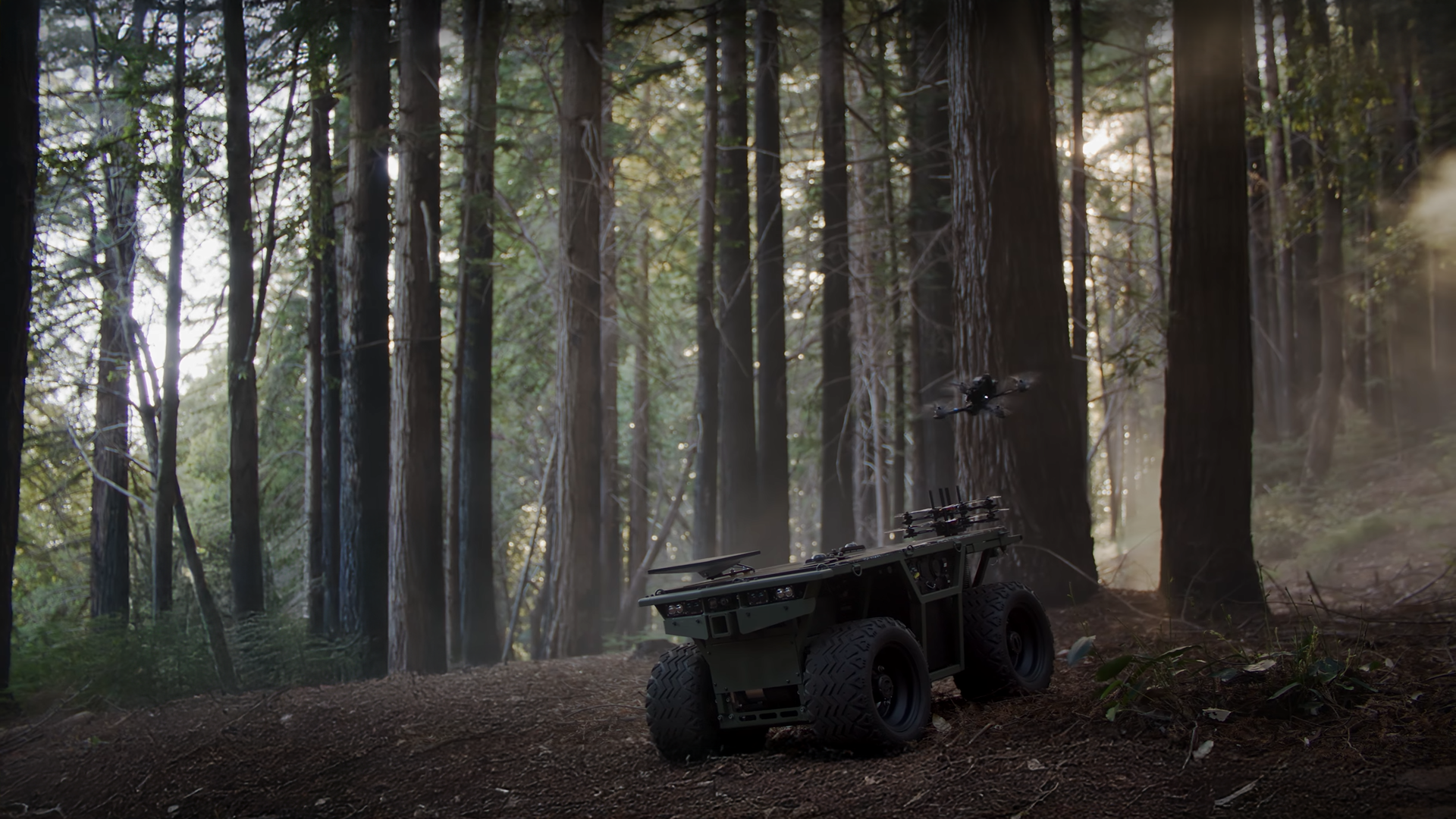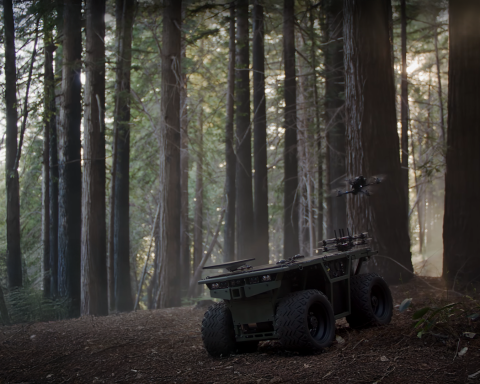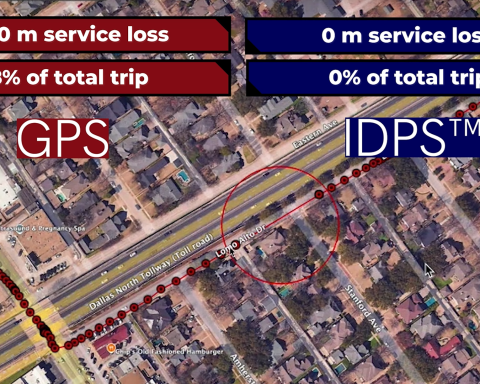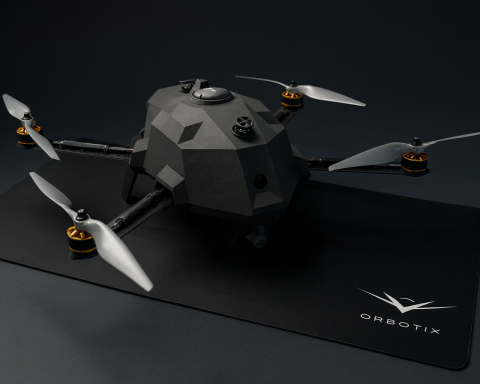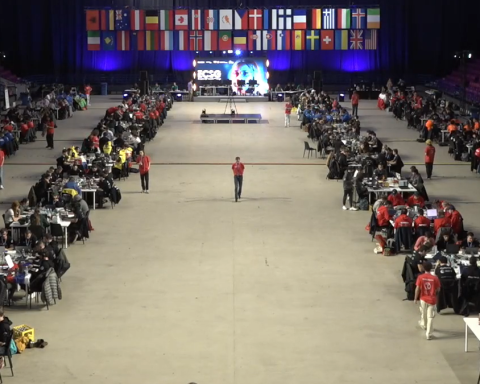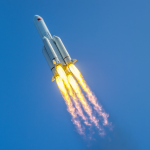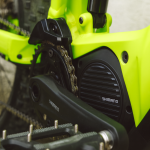- What it is: NOMAD is a next‑generation unmanned ground vehicle (UGV) engineered by Hendrick Motorsports Technical Solutions (HMS) and automated by Scout AI’s Fury autonomy stack. PR Newswire
- Why “fastest”: The “fastest foundation model yet” refers to lower‑latency autonomy and quicker decision loops, not top driving speed. NextGen Defense
- New hardware: NOMAD debuts Fury’s second‑generation hardware stack that is >90% smaller and significantly more power‑efficient than earlier versions. PR Newswire
- Sensors: Designed for camera‑only, passive sensing (RGB or thermal), eliminating reliance on lidar/radar for stealth, simplicity, and reduced power. Scout AI
- Core missions: Light tactical ground missions such as scouting, transport, and other high‑risk tasks. NextGen Defense
- Behaviors: Can operate beyond line of sight (BLOS), follow a human teammate, and accept a wide range of payloads. PR Newswire
- Human–robot teaming: Supports natural‑language control (voice/text/map) and robot‑to‑robot coordination via a language protocol. Scout AI
- Edge operation: Built to run in real time in comms‑ and GPS‑denied environments on COTS, low‑power compute; supports secure OTA updates. Scout AI
- Intended users: A “commercial platform designed to give servicemembers greater capability, protection, and confidence.” PR Newswire
- Status: Public debut in September 2025 as the second UGV form factor to run Fury. PR Newswire+1
- Context: Scout AI’s recent Army Unmanned Systems autonomy contract underscores Fury’s traction across ground platforms. PR Newswire
- What’s not published (yet): Vehicle‑level dimensions, weight, payload, endurance, and top speed.
In‑depth roundup
What NOMAD is (and what “fastest” means)
NOMAD is a collaborative effort between HMS (vehicle engineering, mechatronics, ruggedization) and Scout AI (autonomy). The vehicle runs Fury, Scout’s foundation‑model autonomy stack. Scout bills the NOMAD integration as its “fastest foundation model yet” — “fastest” here refers to autonomy‑loop latency and decision speed, not how fast the platform drives. The design goal is to shrink compute, reduce power draw, and keep signatures low while retaining real‑time responsiveness on a compact UGV. PR Newswire+1
Who it is for
Messaging around NOMAD is unambiguous: it’s built for defense end‑users at the small‑unit level — dismounted teams who need a ground robot to shoulder risk, haul payloads, and scout routes without exposing humans. HMS frames NOMAD as a commercial platform intended to enhance servicemember capability and safety rather than a one‑off research prototype. PR Newswire
What it is for (concept of operations)
The initial mission set emphasizes “light tactical ground missions”:
- Scouting/route reconnaissance — moving ahead of a patrol to probe terrain or vantage points.
- Transport/logistics — shifting ammunition, water, sensors, or power kits to reduce soldier load.
- High‑risk tasks — serving as the first mover into uncertain spaces or along exposed approaches.
Public materials highlight BLOS autonomy, human‑follow mode, and payload flexibility, aligning NOMAD with the classic dull‑dirty‑dangerous role set for UGVs. PR Newswire+1
The autonomy: Scout AI’s Fury, in brief
Fury is a vision‑language‑action (VLA) model purpose‑built for robots. In NOMAD’s configuration it prioritizes camera‑only, passive sensing for day/night operations (RGB or thermal). It’s designed to:
- Run at the edge on low‑power COTS compute (no cloud dependency).
- Understand and execute natural‑language tasks (voice, text, or map‑based inputs).
- Coordinate with other robots via a natural‑language protocol for swarm/team behaviors.
- Operate in comms‑ and GPS‑denied environments, with secure over‑the‑air updates and on‑edge adaptation. Scout AI
Why the hardware miniaturization matters
NOMAD launches with Fury’s second‑generation hardware stack, which Scout says is more than 90% smaller and more power‑efficient than the prior iteration. Smaller compute footprints free up payload volume, simplify mounting, and improve thermal and power budgets, helping the vehicle stay low‑signature while retaining enough headroom for mission‑specific kits (e.g., radios, EW sensors, ISR turrets). PR Newswire
Vehicle architecture & industrial pedigree
HMS brings decades of high‑performance vehicle engineering into the defense realm. Reporting on NOMAD notes the compact control hardware contributes to a low‑profile, energy‑efficient package appropriate for rough terrain and field conditions — an approach consistent with HMS’s broader portfolio of ruggedized platforms. Yahoo Autos
Data & technical parameters (what’s published so far)
Important: HMS/Scout have not publicly released a traditional “spec sheet” for NOMAD as of October 9, 2025. The items below summarize official, on‑record attributes of the NOMAD+Fury configuration.
Autonomy & behaviors
- Foundation model: Fury (Scout AI); fastest Fury variant to date on NOMAD. PR Newswire
- Perception: Passive, camera‑only (RGB and/or thermal), minimized sensor suite for stealth and simplicity. Scout AI
- Compute: Second‑gen Fury hardware, >90% smaller and lower power than prior rev. PR Newswire
- Edge operation: Real‑time autonomy in comms‑ and GPS‑denied environments; COTS compute; secure OTA updates. Scout AI
- Control & teaming: Natural‑language commands (voice/text/map), robot‑to‑robot coordination; BLOS autonomy and human‑follow mode. Scout AI+1
Vehicle & payload
- Platform OEM: Hendrick Motorsports Technical Solutions (HMS). PR Newswire
- Mission fit: Light tactical payloads; “wide range of payloads” supported (exact interface set not yet published). PR Newswire
Not (yet) disclosed (as of Oct 9, 2025)
- Dimensions, curb weight, ground clearance
- Drive type (wheeled vs. tracked), turning radius
- Max speed, endurance/runtime, battery/engine details
- Rated payload (lb/kg) and power export
- Environmental hardening (IP rating, temp range)
How NOMAD differs from most UGVs you’ve seen
- Camera‑only by design. Many fielded UGVs favor lidar/radar stacks, which increase cost, fragility, and signatures. NOMAD leans into passive vision and a learned VLA policy, trading heavy sensors for software that reasons from imagery. Scout AI
- Foundation‑model autonomy at small size/power. Fury’s shrunken hardware and low‑latency loop aim to bring human‑like judgment to compact, low‑power ground robots, rather than only large vehicles with big compute bays. PR Newswire
- Natural‑language command & multi‑robot coordination. Out‑of‑the‑box emphasis on voice/text/map tasking and robot‑robot comms lowers training burden and accelerates small‑unit adoption. Scout AI
Where it sits in the UGV landscape (quick context)
- Milrem Robotics THeMIS (tracked): A widely deployed modular UGV with 750 kg rated / 1200 kg max payload, ~20–25 km/h top speed, and hybrid power options; it’s a platform that hosts many autonomy stacks and payloads. NOMAD’s differentiator is the camera‑only, foundation‑model autonomy baked in from the outset. milremrobotics.com
- Ghost Robotics Vision 60 (legged): A quadruped Q‑UGV used for patrol/inspection with ~2.5 m/s top speed and ~10 kg payload (depending on variant). It excels at unstructured terrain but in a different size/payload class than a logistics‑oriented ground mule like NOMAD. ghostrobotics.io
(These comparisons are for orientation, not head‑to‑head performance; exact NOMAD vehicle specs are not yet public.)
Program and market signals to watch
- Army UxS momentum for Fury. Separate from NOMAD, Scout AI won an Army ground autonomy contract to integrate Fury on Army Infantry Squad Vehicles — a marker that the autonomy stack itself is maturing toward field use. That bodes well for rapid transitions of Fury‑powered platforms like NOMAD. PR Newswire
- HMS commercialization track. Public statements frame NOMAD as a commercial platform for servicemembers, suggesting near‑term customer trials rather than a long research phase. PR Newswire
Bottom line
NOMAD pairs HMS’s rugged UGV engineering with Scout AI’s Fury — a camera‑only, foundation‑model autonomy system trimmed to >90% smaller hardware and tuned for low‑latency decisions at the edge. The result is a low‑signature, payload‑flexible robot teammate aimed at scouting and load‑bearing in dangerous places. The autonomy details are unusually rich for a debut; the vehicle spec sheet is not yet published. If HMS/Scout release hard numbers on payload, runtime, and mobility, NOMAD will move from an intriguing autonomy demo to a serious procurement candidate for small units that need a dependable mule‑and‑scout in contested terrain. PR Newswire
Sources
- Press announcement and tech attributes (HMS partnership; “fastest” model; 90% smaller stack; BLOS, follow‑me, payload flexibility; intended for servicemembers). PR Newswire
- Scout AI’s Fury capabilities (camera‑only sensing, VLA reasoning, natural‑language control, COTS compute, GPS‑denied operation, OTA). Scout AI
- Editorial coverage clarifying “fastest” = autonomy latency, mission set (scouting, transport, high‑risk). NextGen Defense
- Additional reporting on packaging/efficiency and HMS engineering approach. Yahoo Autos
- Scout AI Army UxS autonomy contract for context on Fury’s maturation. PR Newswire
- Peer UGV specs for context: Milrem THeMIS (official page), Ghost Robotics Vision 60 (official page). milremrobotics.com
